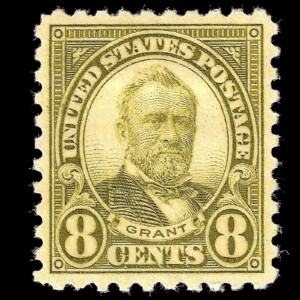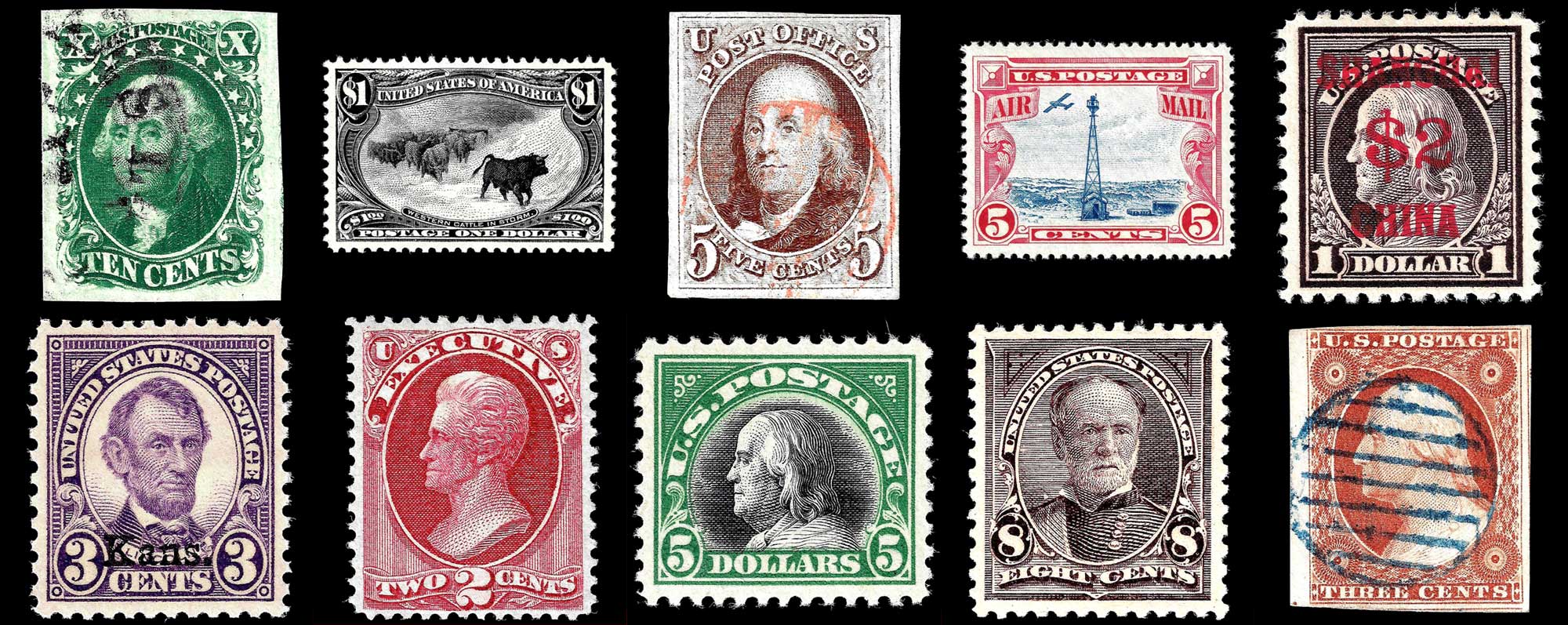
Our Stamp Identification guide allows you to either search by Scott number, or view our image gallery. Each of these stamps has a dedicated page that will help you identify it, historical context, variety information, and our Fair Market Value prices.
We currently have Stamp Identification pages for select issues. We are regularly updating our database, so be sure to check back often. We do, however, have values for 500+ issues on our Stamp Values page.
Identify By Scott Number
If you know the Scott number of the stamp you are wanting to identify, you can go to that issue’s dedicated page to learn more about it’s distinct identification markers. You can also jump to a particular series by clicking one of the ranges below.
We have Identification Pages for select issues. All available identification pages are within the ranges below. If we do not have a specific issue, you can use our Stamp Values tool to see if we still have a value for it. Or see our full list of Scott numbers that we have values for.
Identify Stamps By Design
Visually identify stamps by exploring the gallery. Note that some stamps may be indistinguishable from their true identity by only looking at an image. Click a stamp to learn more about what makes it unique and distinguishable from other stamps that have the same, or similar design.
1875 | Imperforate | Thin Bluish Wove Paper
Reproductions Of 1847 Issue | 1875 | Imperforate | Bluish Paper Without Gum
1851-1857 | Imperforate | Unwatermarked
1857-1861 | Perf 15½ | Same Designs As 1851 Issues
Stamp Identification Guide
Stamp identification is a critical aspect of philately, requiring attention to detail and a comprehensive understanding of various attributes that distinguish one stamp from another. Despite their seemingly identical appearances, many stamps have different varieties based on minor differences in design, color, type, paper, watermarks, and perforation measurements. This guide aims to provide a factual overview of these key areas to aid collectors in accurately identifying their stamps.
Design Characteristics
The design of a stamp is its most visible feature, but hidden within these designs are subtle differences that can significantly impact a stamp’s identification. Stamps that appear the same might have variations due to secret marks or adjustments made to the original printing plates. These changes, often made for reasons such as restoring a printing plate or anti-counterfeiting efforts, are critical for collectors to identify different varieties and understand their significance.
Color Shades
Variations in color shades, although subtle, can indicate a different identification or catalogue number for a stamp. These differences can arise from variations in ink formulations, printing press adjustments, or exposure to environmental elements over time. Recognizing these variations is essential for precise stamp identification and classification.
Stamp Types
Stamps with the same design can differ in form, such as being imperforate or coil stamp versions. Imperforate stamps lack the perforations typically found on stamps, while coil stamps are designed for use in automatic dispensers. These differences reflect the stamps’ intended use and production methods, offering insights into their historical and production contexts.
Paper Type
The type of paper used for printing stamps can also serve as a distinguishing factor. Variations in paper thickness, texture, and type (e.g., porous or laid paper) can differentiate stamps of the same design. The choice of paper is influenced by production capabilities, cost considerations, and aesthetic decisions, making it a significant factor in stamp identification.
Watermarks
Watermarks are designs embedded in the stamp paper, visible when subjected to certain viewing conditions. They serve as security features and authenticity markers. Variations in watermarks or their positions can help identify different issues of stamps that are visually identical in other respects. Knowledge of watermarks is crucial for identifying rare and specific stamp varieties.
Perforation Measurements
Perforation measurements, indicating the number of perforations within a specific length, can vary among stamps with the same design. These differences reflect changes in production processes or the equipment used. Understanding perforation patterns is essential for the accurate classification and identification of stamps, as it provides another layer of detail that distinguishes one variety from another.























































